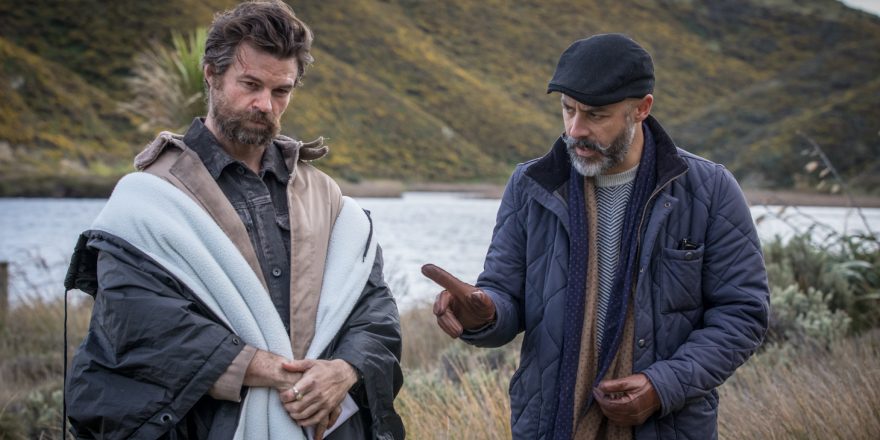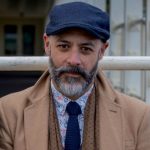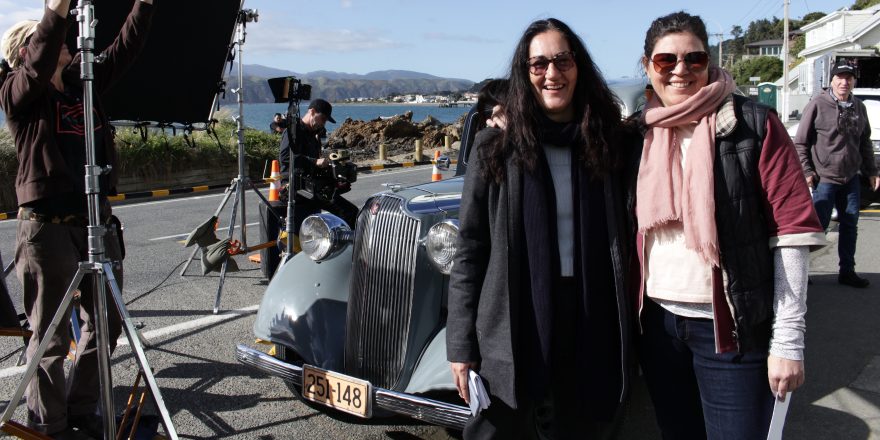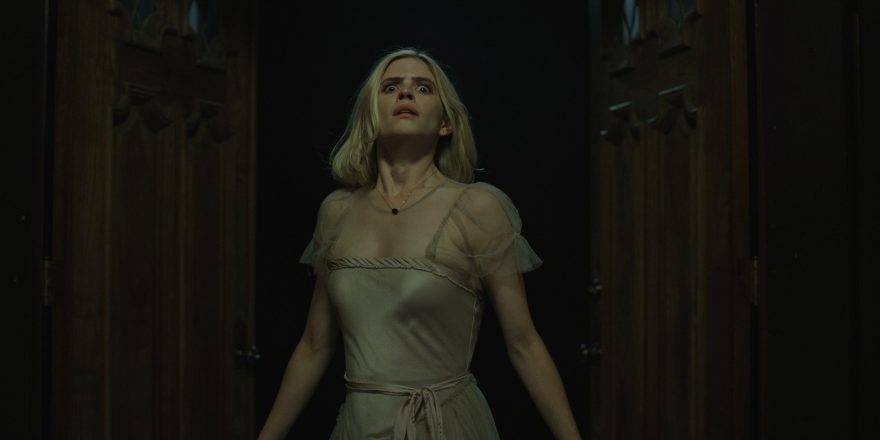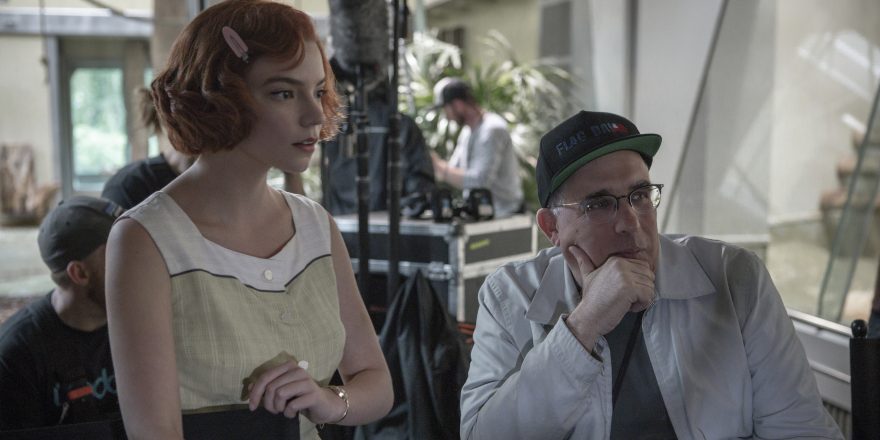My father believed that a child should never go to bed without a story. When we grew tired of hearing the same books over and over, he would tell me adventure stories called James and Dad in the Jungle. These would take place in exotic lands and feature strange and mysterious characters. I only realized much later that he was in fact retelling the plot of films or books we knew, and inserting us into the stories as the main characters. These memories of my father taught me that the benefit of working with an established text is you get another writer, another set of inspirations and imagination at the table. More importantly, that the process of adaptation itself is one of collaboration; where intention and personal perspective become unified.
My longtime writing partner Eli Kent and I come from the theatre. Initially as actors, but with increasing frustration with the vision of New Zealand’s national theatre at the time, we became devisors – where the line between actor, writer, director and designer is blurred and shared. I partnered with Eli because we speak the same language of collaboration. We start as we always do, with characters that bring out the best and worst in our imaginations. We wear them as one would a suit. We sit across from one another in my downstairs office, getting a feel for the fit. We try to get a taste of how they think and view the world we live in – we let them say the unsayable and propose the unthinkable. We let them be heroic, self-sacrificing and tragically brave. We do this for anywhere between five days to three months. And when we start to truly get too much enjoyment from inhabiting these characters, when we start to scare ourselves at what we’re saying, thinking, proposing, that’s when we let them loose and see what happens.
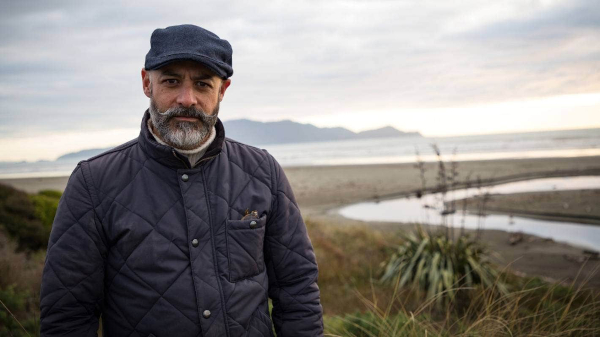
For our debut feature, I wanted to find a narrative that was a practical fit for a modest budget, but one with commercial potential. Something that was going to appeal to our tastes, but also our ability to deliver as emerging filmmakers.
Though our first feature out of the gate, Coming Home in the Dark saw the benefit of being my and Eli’s fifth script collaboration. We wanted to tell a simple, terrifying and universal story: a seemingly respectable man’s past catches up to him with deadly consequences. There are no supernatural elements here, no high-concept monsters, just a primal fear story juxtaposed against the beauty of New Zealand’s nocturnal landscape. We have always been drawn to the genre-driven space but with a core emphasis on engaging characters and themes that explored the grey areas of our psyches. As a director, I’m very focused on the performer, so finding a work that would play to my strengths was an important consideration.
I was first introduced to Owen Marshall’s short story Coming Home in the Dark by a close friend who, knowing my sensibilities, suggested there was potential for adaptation. The impact was immediate and visceral; this was a brutal and poetic work unlike anything I had read from a New Zealand author before. I was compelled by its tone and setting, its events and the sketch of its characters. I knew I wanted to make something of it, but there wasn’t enough there for me to immediately translate to the screen. I met with Owen the morning after he received the prestigious Prime Minister’s Award for Literary Achievement. He listened politely as I made my case that, of all his short fictions, I was most interested in his darkest tales. Whether it was too much champagne the night before or he was genuinely taken with my vision for a cinematic interpretation of the short story, he agreed to grant me the option to adapt. The challenge of adaptation is that in order to be faithful to the story, you have to betray it through collaboration. There is no such thing as a straight translation, so purists beware. We didn’t want to simply stand the story up on screen and turn its pages, we had to find a way to get underneath Marshall’s narrative, while maintaining fidelity to the author and the story’s intensions.
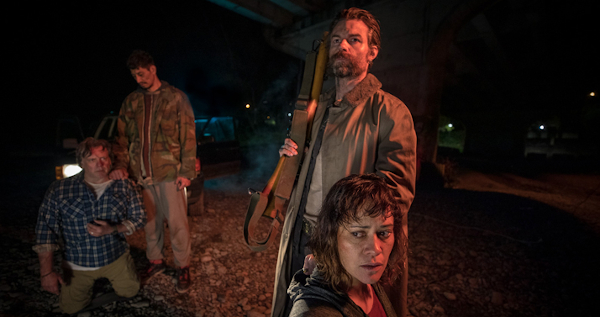
Some years back, I produced a very conservative documentary for local television that looked at an infamous New Zealand boys home. It was an opportunity to further understand the state care system that members of my own family, like so many others during the ’70s and ’80s, had been exposed to. During the months of researching the now-defunct home, I became immersed in the frightening world of institutional culture and abuse. I met with many former residents as well as those who had worked there. More often than not, the staff was well intentioned, usually from ordinary, upper-middle class families. These were men and women wanting to do something meaningful for themselves and their communities. But when placed in extraordinary circumstances, ordinary people can abandon all moral judgment and become autocratic in their behaviors. Then, only later perhaps, do they have to deal with the consequences of those actions. The long shadow of our state ward institutions, coupled with the experiences of those close to me, offered a way to get underneath Marshall’s original story and make it speak to something more personal, more relevant to contemporary Aotearoa and the world.
My brother John [not his real name] was one of those to experience time in a borstal. When I think of John, when I see him in my mind’s eye, he is sitting on a stool, hunched at the bar, a beer bottle in his hand. On his back, he carries a camo-green hessian backpack with a hand-inked peace symbol drawn in the centre. Although he is alone, he is holding court, speaking to some unseen crowd. I don’t hear anything he says, but his smile is all teeth and there’s an unmistakable twinkle in his eye. That’s when the backpack starts to move of its own accord. At first it shifts subtly, as if swaying side to side as he swivels on his seat. Then it stirs more urgently, as if something is trying to get out. John continues to drink and laugh, being the natural raconteur he is, all the while oblivious to this increasingly wild animal on his back. My brother has his demons. Like many other boys who experienced borstal or state ward institutions, he keeps them locked up – in his case, inside a camo-green backpack. But as the booze flows and his narration takes on a darker tone, you realize that it’s not the demons struggling inside that hessian prison; they have been sitting comfortably on the bar stool in front of you for some time now. It’s my brother John who is in there, struggling to get out, to be free. This image became the genesis for how we approached turning Coming Home in the Dark into a film.
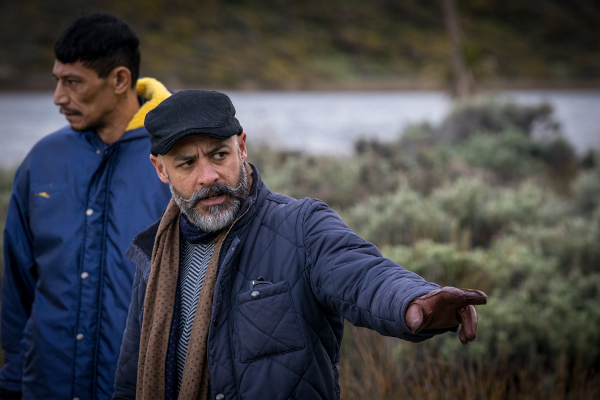
Our adaptation of Coming Home in the Dark is a collaboration weaving literary intention with the very real conversation about empty spaces and brutal shifts in the NZ landscape, both geographic and societal. The reality and energy of evil and the need for recognition and atonement are all very relevant now to any notion of change in our society. As a nation and a world, we are once again having to face up to the banality of evil, what was really done and what has been the cost. And why was it ever alright? The mystery of New Zealand for me is the sheer scale of the place geographically, its beauty but also its terror. This is what is at the heart of Marshall’s short story. Our adaptation asks, are there really any differences? The core questions of our time are found in our land. We still need to understand our own brutality.
Featured image shows James Ashcroft with actor Daniel Gillies on the set of Coming Home in the Dark.


